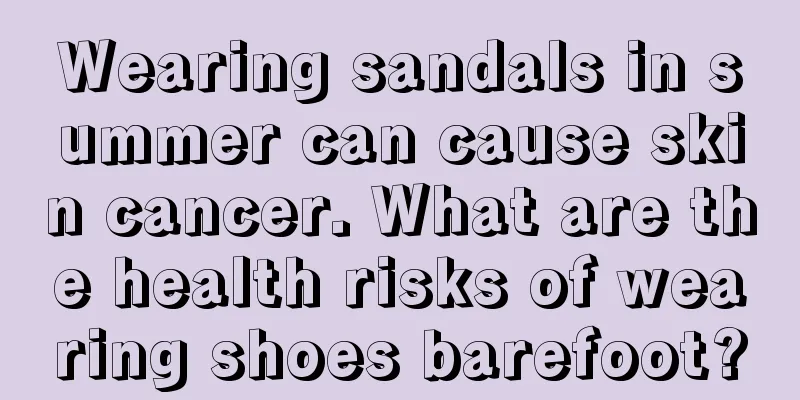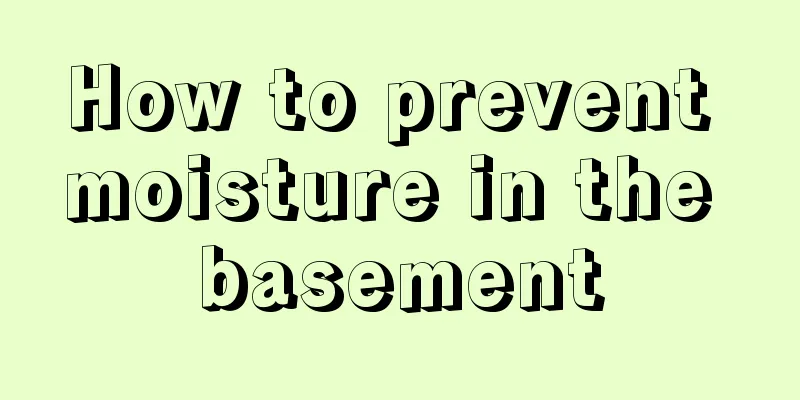Wearing sandals in summer can cause skin cancer. What are the health risks of wearing shoes barefoot?

|
Ladies who like to wear sandals in summer should be aware of the health risks that these shoes bring to the skin, because sandals usually expose a large area of foot skin to the sun, which can easily increase the risk of skin cancer. Flip-flops are quite popular nowadays, but this kind of shoes exposes a large area of the foot skin to direct sunlight. Most people usually don't remember to apply sunscreen or check their feet regularly, so they can easily increase the risk of skin cancer without realizing it. A London hospital has received at least two patients with foot skin cancer caused by sun exposure in the past three months. One of the patients had a malignant skin tumor on his foot for two years, but he had always mistaken it for a bruise and did not pay attention to it. Cancer affecting the foot manifests as a foot tumor, usually formed on the sole of the foot, between the toes or under the toenails. Because this type of tumor does not cause pain or discomfort, it is difficult for patients to detect. What are the health risks of wearing sandals barefoot in summer? 1. Increase the chance of trauma and infection Wearing shoes barefoot exposes a large amount of foot skin, increasing the chance of trauma and mosquito bites. Some people even get blisters on their feet from wearing shoes barefoot. Dust and germs in the air directly adhere to the skin, not only making the feet dirty, but also causing infection if they encounter wounds such as blisters that are worn out. 2. Increased risk of skin cancer Exposure to the sun directly can "bake" the skin. When the skin is directly exposed to the sun for a long time and over a large area, the ultraviolet rays in the sun will stimulate the skin to produce a large number of oxidative free radicals, which will damage skin cell tissues and accelerate the oxidation reaction of melanin production, making the skin dark, rough and lose elasticity, and also reducing the skin's resistance. According to data, sandals and other shoes expose a large area of the foot to the sun directly, and people usually do not apply sunscreen to their feet or do regular checks, which can easily increase the risk of skin cancer. 3. Cause keratosis and dermatitis Without socks to protect, the frequent "close contact" between feet and shoes will easily make the stratum corneum of the heels and other parts that often contact shoes grow thicker and thicker, greatly increasing the chances of calluses and corns. Some people walk barefoot for a long time, and the instep, toes and other parts of the feet that rub against shoes are prone to skin redness, papules, blisters and other symptoms. This is a contact dermatitis caused by skin allergies to leather, rubber and other shoe materials. 4. Prone to fungal infections People's feet are prone to sweating in hot weather. Wearing shoes without socks, especially wearing leather sandals, plastic sandals or even hiking shoes that are not very breathable, will cause the skin of the feet to be directly soaked in sweat. Over time, the part of the foot that touches the shoe will turn white. At the same time, since fungi can easily grow in a humid and hot environment, it can also cause fungal infection of the feet. 5. Catch a cold The fat layer of the feet is thin, the insulation is poor, and the feet are farthest from the heart and have poor blood supply, so the skin temperature of the soles is the lowest and they are very susceptible to cold. Once the feet are cold, it can reflexively cause the capillaries of the upper respiratory tract mucosa to contract, significantly reducing the resistance, and the germs in the air will take advantage of the opportunity to enter, causing heat colds and other diseases. Especially when it rains, bare feet are more likely to get cold, which can cause stomach pain, back pain, leg pain, and dysmenorrhea in women. |
<<: What is melanoma? What factors cause melanoma?
>>: Is renal hamartoma a renal cyst?
Recommend
What is the disease of stomachache and bloating
Stomach discomfort is very common in life. Many p...
How to remove long-lasting red wine stains
Some people accidentally drop red wine on their c...
How to use single essential oil
Essential oils are very common to us. There are m...
Let's take a look at the six symptoms of colon cancer
Although colon cancer is a disease that many peop...
Why are my ears itchy lately?
In real life, it is a very common situation that ...
What is the reason for a hard lump growing between toes?
The feet are a relatively important part of our b...
How to perform scraping on the front neck
Gua Sha is a way of health care in people's d...
Can thyroid cancer cause phlegm in the throat?
If thyroid cancer causes a strange sensation in t...
Auxiliary examination methods for bile duct cancer
At present, the medical community has not yet cle...
Hospitals that treat hamartoma
Hospitals that treat hamartomas. When hearing tha...
Are the symptoms of rotavirus obvious?
Rotavirus is actually a very common virus in our ...
What are the effects of Biboting
Biboting can also strengthen the body and promote...
I felt dry mouth and panic after drinking slimming coffee
A large number of women think they are too fat, s...
How much does it cost to treat skin cancer with traditional Chinese medicine in one month
How much does it cost to treat skin cancer in a m...
Does the magnetic therapy pillow have any side effects?
People also need to pay attention to certain ways...









